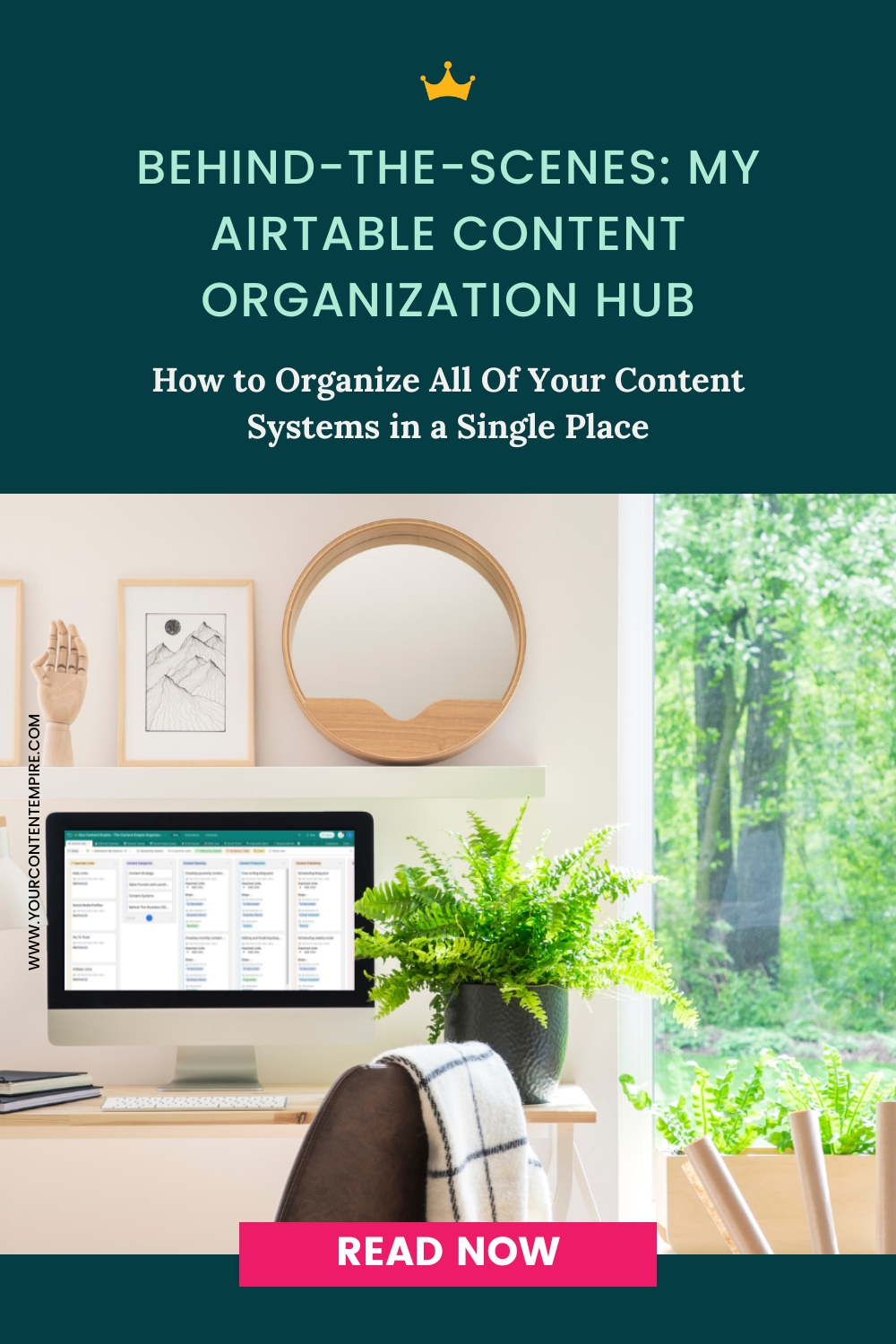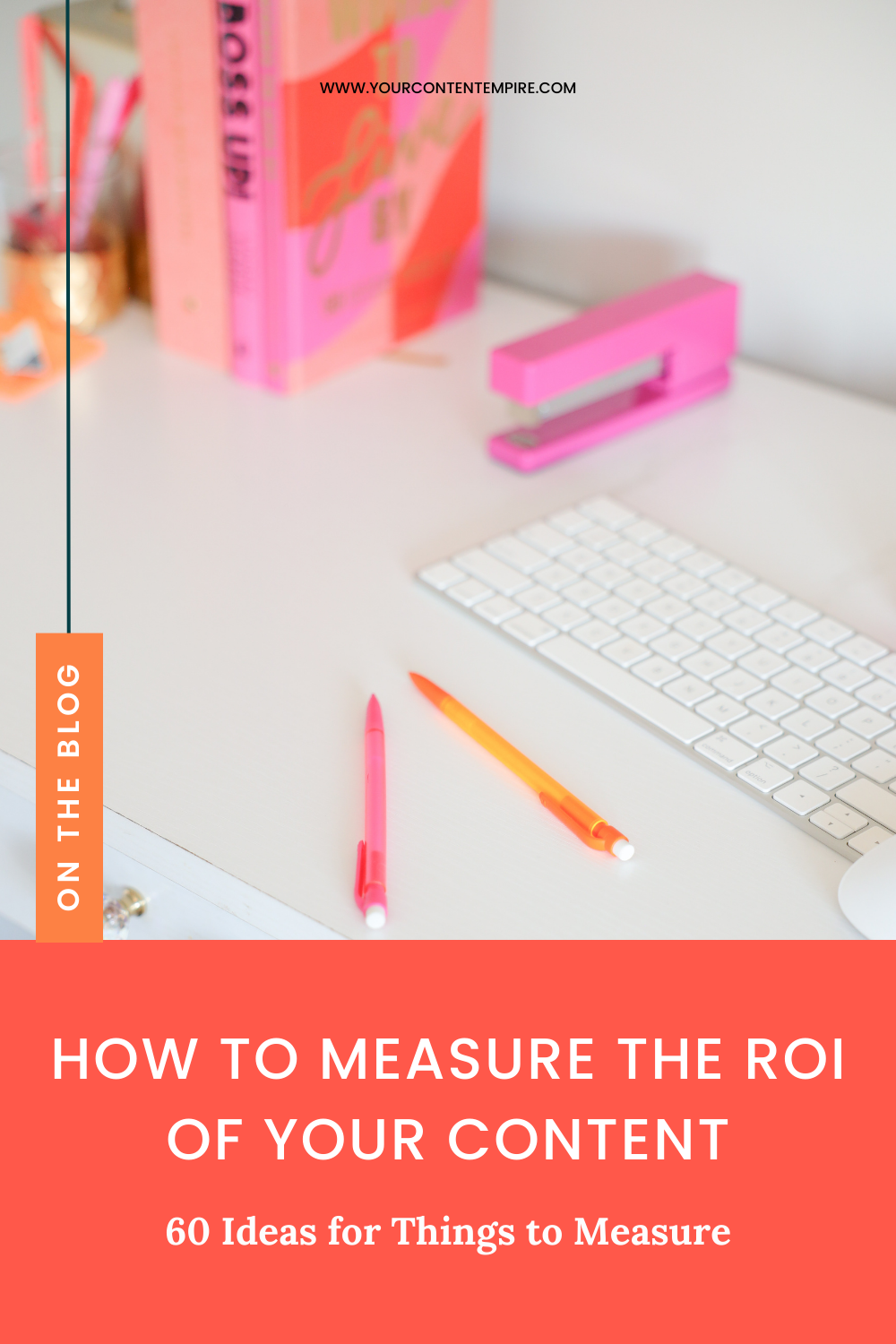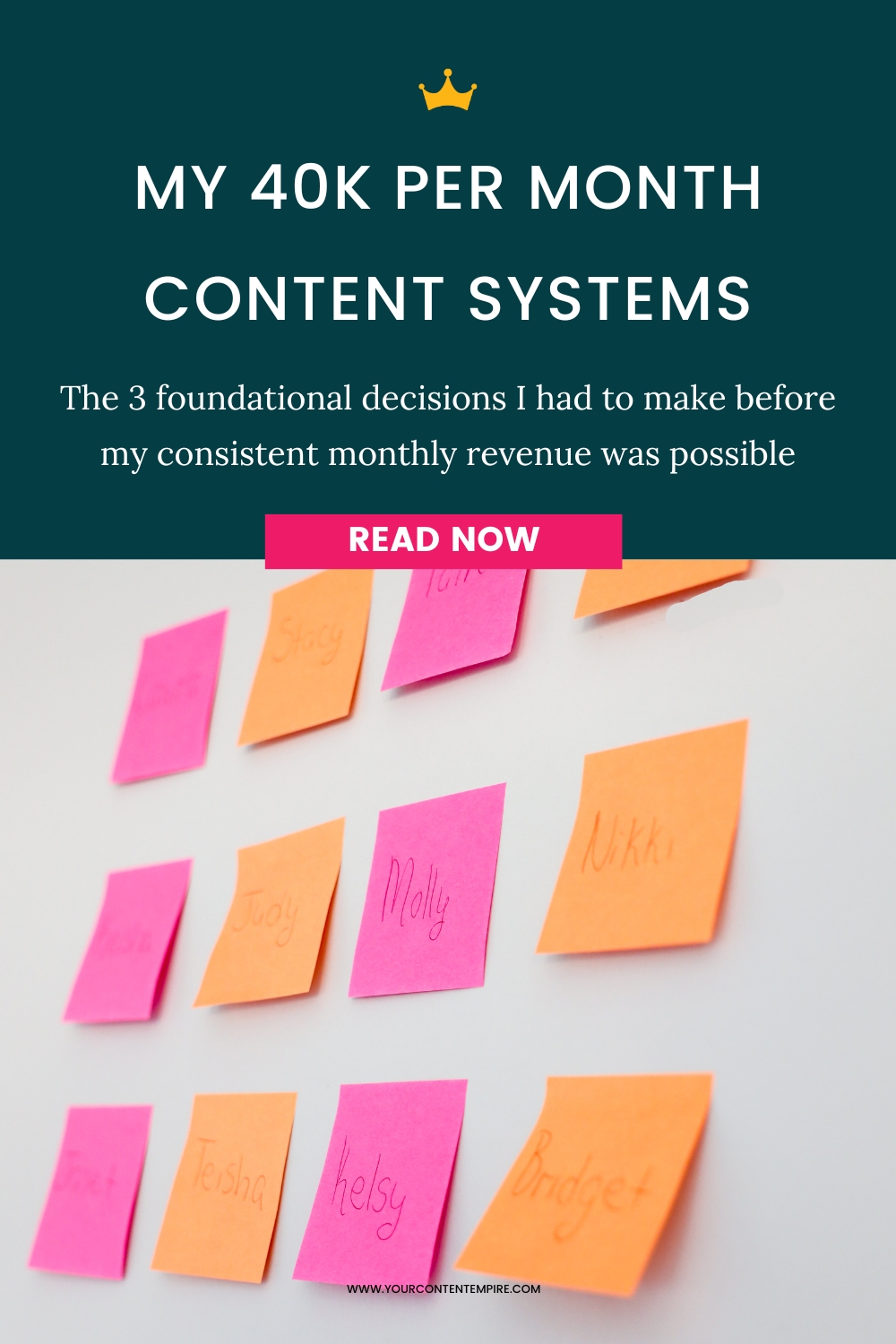Sometimes you need a blog post and you need it right away. Maybe your editorial calendar is reminding you that you’re due to publishing tomorrow, or maybe you owe a guest post to someone else. Perhaps you just want to get ahead a little bit so you can have some content breathing room.
Are any of these ringing a bell?
If you've been doing this online business thing and you’ve been blogging and creating content for a while, you're going to run into a situation where you need to pull something together really quick or just not do anything at all.
There are so many ways you can pull together a blog post – options that are much quicker than sitting down and starting from scratch. However, there is one method that stands above all the rest, and that is content interviewing.
Prefer to watch this blog post instead? Click on the video below!
What is a Content Interview?
In my sales funnel and content agency, we work with a lot of brilliant clients within a wide variety of different niches. Our clients are truly the experts at what they do. And one of the challenges we’ve overcome is figuring out the best way to capture their know-how and translate it into polished and branded copy.
So we started to use a process called content interviewing.
Here’s a quick overview of how it works:
- We create an outline for a blog post (or a sales email, webinar, freebie, or whatever we’re writing for them) and organize it into questions.
- We tell them to treat the content interview like a podcast interview or a chat with a friend. This helps the client relax and ditch the stress of answering perfectly because we still have an opportunity for editing and copywriting.
- We send the interview to be transcribed.
- We use the transcript as the background for the copywriting.
But even though we do the content interviews for our clients, the process can still work for you.
Pros of a Content Interview Process in Any Business
#1 – It helps you generate a lot of words quickly
I consider myself primarily a writer and while I love to sit down and have all day to work on a really juicy blog post, I don't always have the time.
It takes a lot of time to sit down and write something and it’s a lot quicker to speak the words instead. So content interviewing just wins on a pure word per minute level.
That's one of the reasons why you see tools like Voxer or Loom being so prevalent in our industry. It's a lot easier to express yourself and explain your ideas when you're just talking to somebody versus having to type it up.
I know for myself with my team, I can spend 30 minutes obsessing over the right way to type something up in Asana. Or I can just hop on Loom or hop on Voxer and explain myself in a two to three minute video.
#2 – It combines the power of pen/paper with the efficiency of speaking
There is no denying it. Multiple studies have shown that when we handwrite something we have four times the idea generation that we would when typing. It allows us to retain more information, think more creatively, and for the purposes of blogging, organize our thoughts.
That’s the power of pen and paper that we leverage for the content interview process. We create an outline and our speaking notes by hand first to come up with our ideas and then organize those ideas.
It also combines the efficiency of speaking because it is a lot quicker to answer a question than it is to type up your answer.
#3 – It’s flexible
I love that you can either do a content interview solo or you can rope in a friend, partner, spouse, or somebody on your team to ask you these questions and have a discussion with you.
That is one of the reasons why there is so much value in how we work with our clients: We’re strategic. We’re not blindly asking you questions and leaving it all up to you to come up with the answer. We have the opportunity to ask follow-up questions, helping you expand upon your answer so that we have everything we need to create a top-notch piece of content or copywriting.
#4 – It gives you an opportunity to practice speaking your ideas
Having the ability to articulate your thoughts, processes and ideas is such a valuable skill to have.
Even if it feels completely unnatural at first or you feel like you struggle with the head-to-mouth connection, it’s a safe opportunity for you to develop your skills, which will help you in future interviews, sales calls and speaking opportunities.
#5 – It’s an effective way to delegate your copywriting and content creation
As someone who is running multiple businesses and doesn't always have the time to dedicate to writing all of my own content, I love that content interviewing still allows my blogs to come from me and my own unique ideas and perspective.
It's a great way of getting those ideas across and packaging them over to somebody who can then do the writing. (Confession though: Even when I'm writing a post myself, I often still use this content interview technique because it lets me outline my post quickly and have the draft pre-done before I start with the writing).
So if you’ve struggled with delegating your content or copywriting in the past, this is likely one of the big reasons why. Without a process for getting your ideas across to someone who’s doing the writing in an organized way, they’re not set up for success.
And because content interviewing leaves plenty of opportunities for revision and editing. You don't have to get it perfect right out of the gate.
How To Use The Solo Content Interview Process To Create A Blog Post
So now that you know why this process works, let’s jump right into the seven steps of using the solo content interview process to create a blog post.
Step 1: Set the intention
The first step is to set an intention for your blog post.
At this stage, we want to know:
- The topic (and working title)
- The purpose from the perspective of your reader (what do they get out of reading it?)
- The purpose from your perspective (are you leading up to a specific call to action in the post?)
Step 2: Decide on the questions the post will answer
Next, we want to think about the sections and questions that have to be answered in each section.
For the introduction, this could include the story or anecdote that you’re using to open up this conversation. Or why this topic is important for the reader.
For coming up with your main sections of the blog post, break it down into steps if the sections need to be covered in a specific order or a list of subtopics if it’s more a listicle that doesn’t require a specific order.
Then for each of those sections, come up with a list of questions that have to be answered in order to communicate the details of that section.
Here’s a rather meta example:
For this blog post, I’m writing about how to use the content interview process to generate a blog post quickly. My sections are: the introduction, why this process works, steps 1 to 7 (each their own section) and a conclusion.
For this section (Step 2: Decide on the questions the post will answer), here are the questions I came up with:
- What is the process for coming up with your blog post questions?
- What is an example that shows this in action?
Then for the conclusion, your questions could be: What is a summary of what you’ve covered in the topic? What is the next step that you’d like a reader to take?
Step 3: Add your answer notes (aka your speaking points)
Before you record yourself, take a couple of minutes to write down 2-3 bullet points for each of your questions. These will help ensure you remember to say everything you want to in each of the sections.
Step 4: Record yourself and transcribe the recording
When it comes to recording yourself, you have a couple of different options:
- Otter – It’s a free (or paid) tool that you can use to record your content interview and have it transcribe at the same time. The good thing about this is that it combines these steps into one and it’s free. The thing to consider is that the transcript is quite rough so it will require a lot of clean-up.
- Rev – Another option (my go-to) is to record using Zoom or even just my phone, and then send it to be transcribed by a human using Rev. The good thing is that the transcript is really clean with minimal clean-up required. The thing to consider is that it can take up to 24 hours usually and does cost more.
So have your speaking notes handy, record yourself and then get it transcribed.
Step 5: Organize the transcript
Once you get the transcript back, create a blank word doc. Add your section headers from your outline and then copy and paste your answers from the transcript into their sections.
Step 6: Clean up the transcript
Now read through the transcript and clean up any errors (wrong words), remove any sections that are redundant or where you repeated yourself.
The goal for this step is to have a completed draft of your blog post. So your doc looks like a blog post and not a transcript.
Step 7: The editing process
Now we’re ready to finish up the blog post with my four-phase editing process:
Editing Pass #1: Edit for clarity
Go through each section and make edits based on the following questions:
- Does this section make sense?
- Are there any spelling or grammatical errors?
- Are there any alternative words that would fit better?
- Does it need to be smoothed out or flow more logically?
Editing Pass #2: Edit for personal branding
Go through each section make edits on the following questions:
- Does this sound like you?
- What can you do to make this section more branded or more yourself?
- Where can you add some personality?
Editing Pass #3: Edit for emphasis.
We never want to forget that in most cases we are writing online, which means we need to make our writing scannable and easy to digest.
Go through and ask yourself each section what is the most important piece of information and:
- How can you emphasize it with formatting (bolding, italicize, font, colour, highlighting, etc.)?
- Where can you add more headers and subheaders to break the section up?
- Where can you make your paragraphs and sentences punchier and shorter?
- Where can you add more bullet points or lists so that you can make the section easier to read?
Editing Pass #4: Final pass
The final editing pass is your final review of the piece of the blog post. This means going through each section and making your final edits, touching on anything that can be made more clear, more concise, and more impactful.
Once you've completed this entire process from start to finish, you're going to be left with a really high-quality blog post.
Try the Content Interview Process for Yourself
The content interview process is a strategic, efficient way to generate a blog post fast. Plus there’s the added advantage of being able to execute this method on yourself or have someone else to help you.
To get started with the process, download the Monthly Content Planning Kit to figure out what post to create next:







